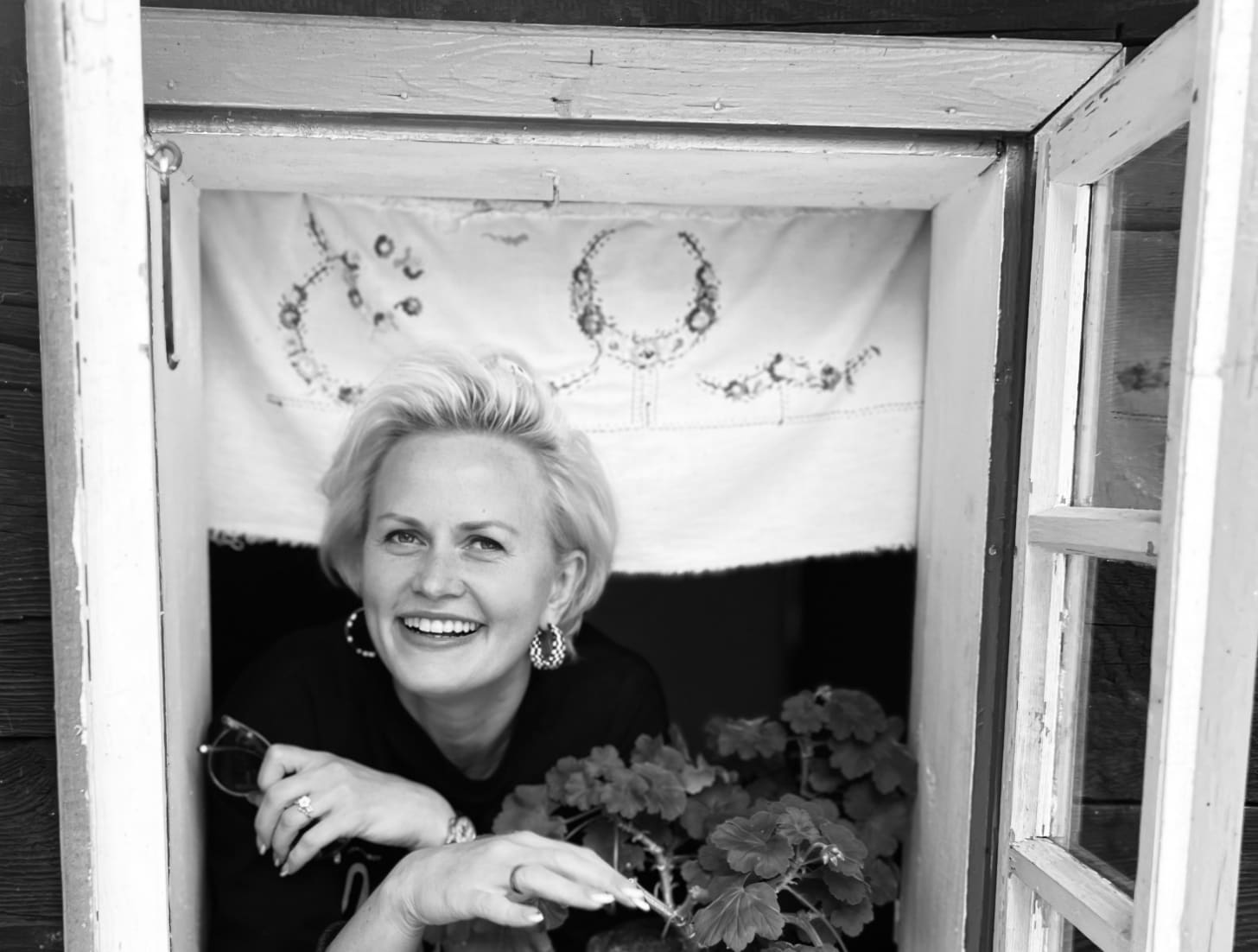The Window Through Which We Are Looking and the “Desks" at Which We Are Writing
"Ritual is one of the ways in which humans put their lives in perspective… Ritual calls together the shades and specters in people’s lives, sorts them out, puts them to rest.” — Clarissa Pinkola Estés
On Monday morning—though sometimes, unexpectedly, on Sunday afternoon—I usually greet my Substack readers, who are quietly preparing for the week ahead. It is a small ritual I follow. This week, however, was different.
Monday afternoon in a little town, I stopped, enchanted in front of a window. The frame was tall, painted in white but now weathered into a softness, as though time itself had brushed it over with its nonchalant hand. The double glazing held the shifting light of the day together with the faint impression of years that had passed before it. Draped across the glass were two handmade crochet curtains, their delicate threads forming birds caught mid-flight, their wings forever outstretched. Standing there, I couldn’t help but think of Kazimierz Wyka’s poem The Thing of Imagination (Rzecz wyobraźni)
“this is a window I said
this is a window
behind the window there is a garden
in the garden I see an apple tree...”
Yes, a window.
But not only a window, a moment, a statement.
The frame opens onto more: a garden, an apple tree, a father picking fruit. Each moment is given its own space, its own block of attention. Nothing spills over into the next line. Instead, the poet repeats, affirms, and holds reality still so it can be seen. And isn’t that how we look at the world, too? Not in one sweeping view, but in pieces—an image here, an act there, a memory that suddenly takes shape.
Life comes to us in blocks, and we stack them carefully, like bricks in a wall. Sometimes they are images, music, or aromas. Sometimes they are gestures. Sometimes they are feelings we cannot name.
A man in a hat came up with an idea of picking up the apples from the field where they fell on the ground. That man said it loud, and off they went, without being observed, to leave them at the porch in two baskets. We will make an apple cake out of them. I imagine how bitter or sweet they are. They are perfect—some even marked by worms, a sign of a truly good apple.
Yes, looking can be an act of care. The details may be small, but they carry entire histories: of someone’s hand, of ideas, of time passing, of someone once standing where I stand today.
And precisely, the place where the window at the beginning of this note was, was entangled in a meaningful process of conservation and restoration of historic and artistic objects. Just opposite it, there was a statue of a shoemaker, a real good man of the past, observed by anyone entering the house of restoration.
Our minds, like panes, ripple and distort; our memories frame reality in fragments. We don’t perceive everything at once, and perhaps we’re not meant to. The art is in the noticing—block by block, moment by moment. The window through which I am looking is the one we all carry: the window of perception itself. To live with such a window is to accept that the world is built from fragments, not panoramas. And sometimes, if we linger long enough at a single, simplest frame, the whole world shines through onto the infinite.

The infinite windows, at which we often write: kitchen windows, cafes’ windows, large airport windows, on our laps, not desks…
Interestingly, the word desk began as discus—a flat plate—then desca, a simple board, which carried the basic sense of something laid out, flat, and usable. In Medieval Latin this became desca, a general term for a table or board. The word travelled through Old Italian and Old French as desque before arriving in English around the fourteenth century. By the seventeenth century, its meaning narrowed into what we recognise today: a dedicated table for writing, often fitted with compartments or drawers. Only over centuries of human practice did it acquire the cultural weight of being the symbolic site of work, study, and creativity.
But a desk facing a window, of whichever kind, becomes a threshold of perception—an aperture where imagination absorbs the drift of clouds, the shifting atmospheres of light, and slowly metabolises them into language.
Visiting the Museum Gosławickie, I paused before the desk of Zofia Urbanowska. Behind it, a window. A writing desk facing a window tells us: stories do not emerge from confinement but from permeability. We do not own the stories we write; we are simply their custodians for a while. It was Urbanowska herself who once wrote: A book is like a garden you carry in your pocket. Even though she is not widely read and even her Wikipedia page has not been translated into any other language, I am deeply fascinated by her handwriting and by her books, which—rarely, but still—are accessible in physical form, though not electronically.

And yet, the most extraordinary part of all this is that the threads of time and memory are not only preserved in books and windows, but also in gardens, porches, the streets and homes. Zofia Urbanowska walked these same lanes, the town now honouring her with a street in her name. Fifteen years ago, I stood in her original house, the very walls that had witnessed her life, and promised a future there in marriage. Standing today before her desk, before that window, I sense a continuity: my own memories made here, coffees and apple cakes, weathered paint, crochets, scent of apples, insist that attention to small things—the stacking of moments, the caring for fragments—that we are stewards of time, and that every gaze, however ordinary, carries the possibility of the infinite.







